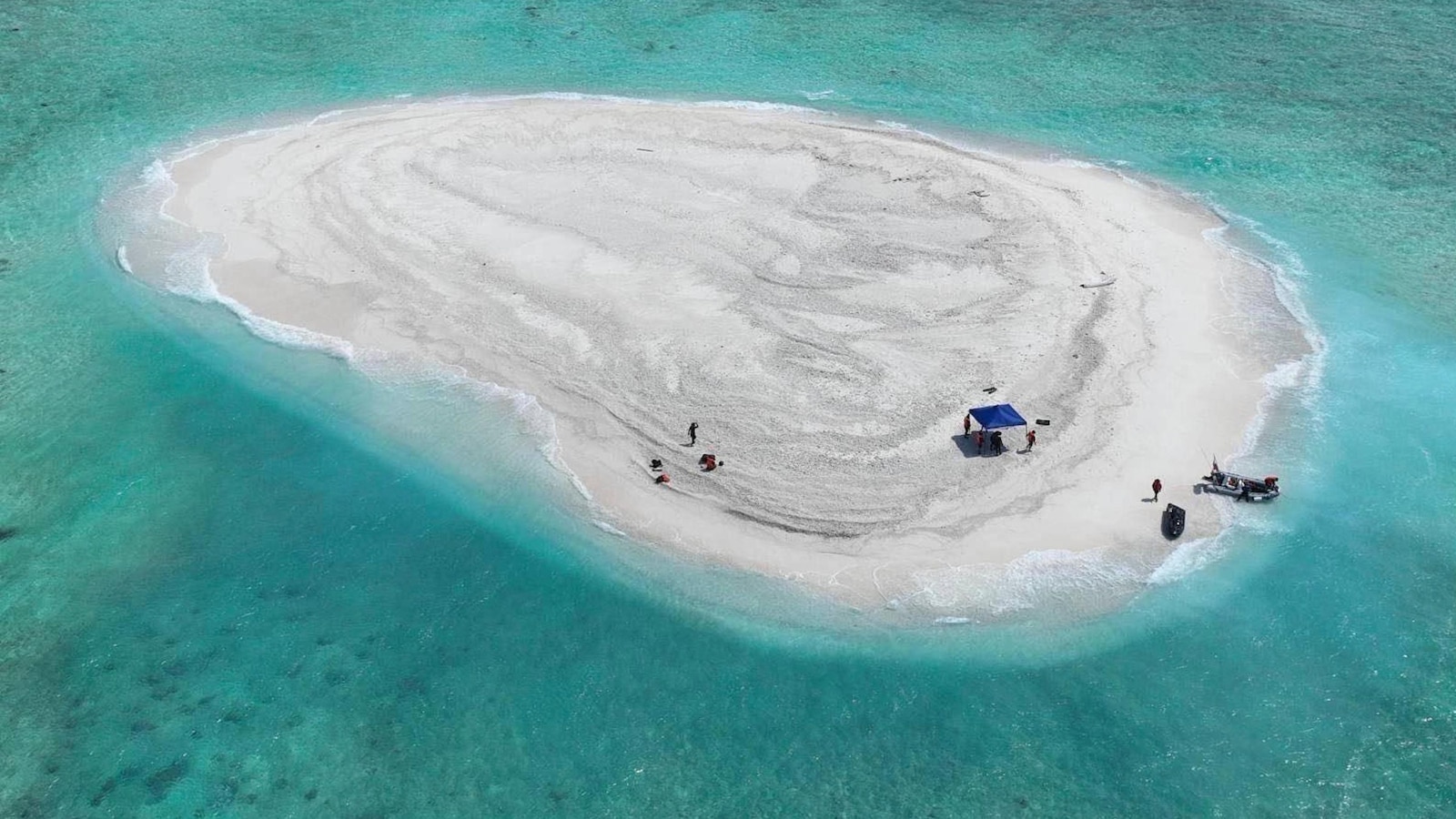
MANILA, Philippines — Chinese coast guard ships backed by a military helicopter attempted unsuccessfully to block two Philippine government vessels carrying scientists from reaching two sandbars in the disputed South China Sea, Philippine officials said Friday.
Chinese coast guard personnel blew the horn on one of their ships for half an hour and repeatedly transmitted radio warnings during the confrontation Thursday, but the Filipino scientists managed to complete their four-hour marine and biodiversity research at the barren sandbars called Sandy Cay, the officials said.
The Chinese coast guard gave a different account of the faceoff. A spokesperson, Gan Yu, said in a statement that its law enforcement officers “boarded” the sandbars, which Beijing calls Tiexian Reef, and dealt with what it called “illegal activities” by 34 Philippine personnel who “ignored China’s warnings and dissuasion.”
“That’s another lie coming from the Chinese coast guard,” Philippine coast guard Commodore Jay Tarriela said at a news conference on Friday. “For four hours, our marine scientists were able to continue their research.”
Journalists who were invited to join the research mission witnessed the incident, Tarriela said.
It was the latest flareup in increasingly tense territorial disputes that are seen as a potential Asian flashpoint that might bring China and the United States into a conflict if they degenerate into a major armed confrontation.
China, the Philippines, Vietnam, Malaysia, Taiwan and Brunei have overlapping territorial claims that have erupted from time to time into brief confrontations in the South China Sea.
Hostilities between China and the Philippines, however, have worsened since last year, resulting in minor collisions at sea and injuries to a few Filipino crewmen, sparking a war of words.
Washington has no territorial claims in the strategic waterway but has questioned China’s claim to virtually the entire seaway. The United States has repeatedly warned that it’s obligated to defend the Philippines, its oldest treaty ally in Asia, if Filipino forces, ships and aircraft come under an armed attack.
During the Chinese coast guard’s maneuvers, one of its ships crossed the bow of the Philippine fisheries vessel BRP Datu Sanday at a distance of 100 meters (328 feet), Tarriela said. At least 13 suspected Chinese militia vessels tried to help form a blockade, he said.
Two of the three small sandbars where the Filipino scientists carried out a survey are located between Philippine-occupied Thitu island and Subi, a disputed reef that China transformed into an island base with a military-grade runway, seaports and a number of buildings with communications facilities.
In 2017, Chinese officials accused the Philippine military of attempting to build a structure on one of the sandbars, and deployed Chinese coast guard and suspected militia ships to keep watch on Sandy Cay.
___
Associated Press journalist Emily Wang in Beijing contributed to this report.
In recent years, tensions in the South China Sea have been steadily escalating as multiple countries lay claim to various islands and territories in the region. One of the most recent incidents involves an attempt by the Chinese coast guard to obstruct Philippine vessels in the disputed waters.
The incident occurred on April 27, 2021, when two Chinese coast guard ships blocked and water cannoned two Philippine boats that were conducting maritime patrols near the Scarborough Shoal. The shoal, also known as Panatag Shoal or Bajo de Masinloc, is a disputed territory claimed by both China and the Philippines.
The Philippine vessels were on a routine patrol in the area when they were approached by the Chinese coast guard ships. The Chinese ships maneuvered dangerously close to the Philippine boats, forcing them to change course to avoid a collision. The Chinese coast guard also used water cannons to try to drive away the Philippine vessels.
This incident is just the latest in a series of confrontations between China and its neighbors in the South China Sea. China has been asserting its territorial claims in the region by building artificial islands, militarizing them, and conducting military exercises. The Philippines, Vietnam, Malaysia, Brunei, and Taiwan all have competing claims in the area.
The United Nations Convention on the Law of the Sea (UNCLOS) grants countries exclusive economic zones (EEZ) up to 200 nautical miles from their coastlines. However, China claims historic rights to most of the South China Sea based on its “nine-dash line” map, which encompasses almost 90% of the sea.
The Philippines has taken its dispute with China to an international tribunal under UNCLOS and won a landmark case in 2016 that invalidated China’s claims to the South China Sea. However, China has refused to recognize the ruling and continues to assert its claims through military presence and aggressive actions like the recent attempt to obstruct Philippine vessels.
The international community has condemned China’s actions in the South China Sea and called for a peaceful resolution to the disputes through dialogue and adherence to international law. The United States has also expressed support for its allies in the region, including the Philippines, and has conducted freedom of navigation operations in the area to challenge China’s excessive maritime claims.
The incident between the Chinese coast guard and Philippine vessels highlights the ongoing tensions in the South China Sea and the need for all parties involved to exercise restraint and respect international law. The region is a crucial maritime trade route and a valuable fishing ground, and any escalation of conflict could have serious consequences for regional stability and security. Diplomatic efforts must be intensified to prevent further incidents and find a peaceful resolution to the disputes in the South China Sea.


